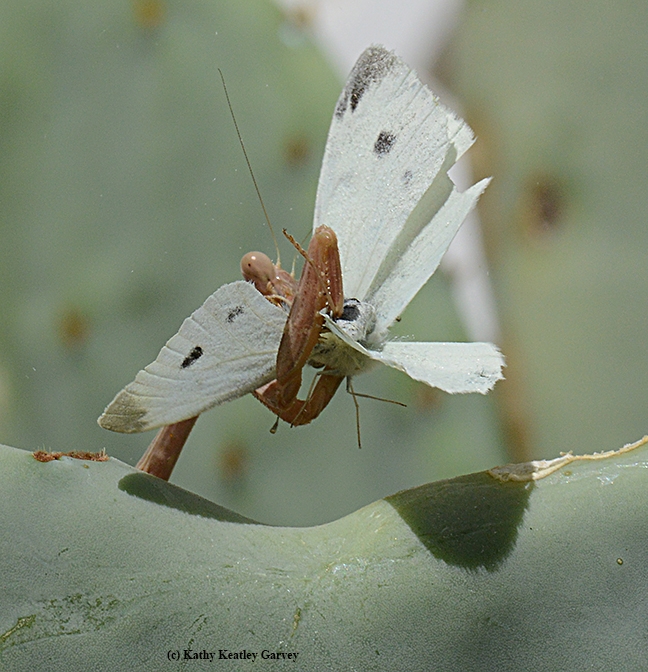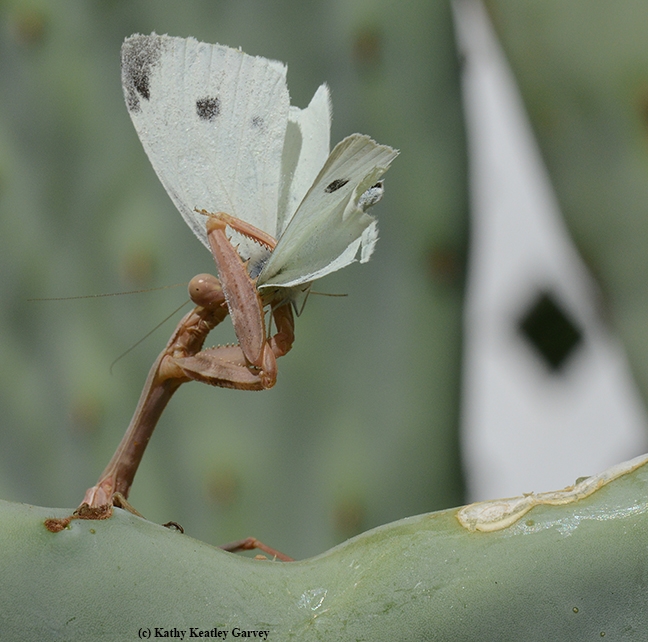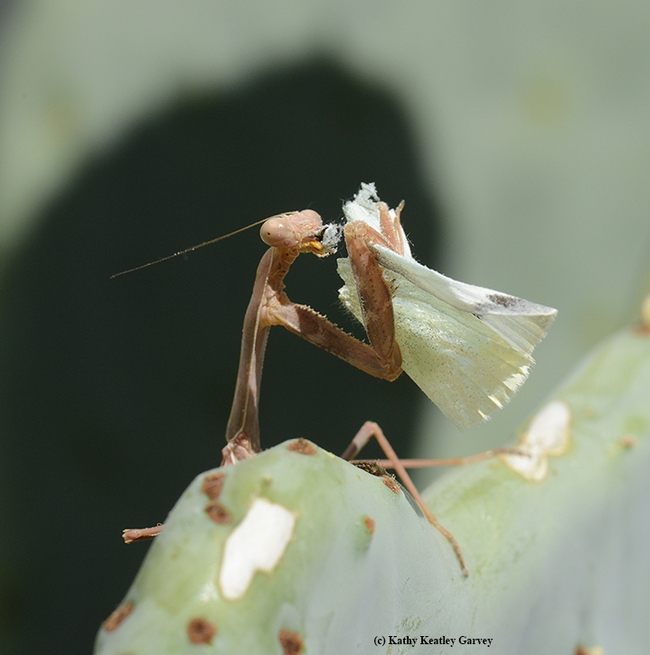So here's this praying mantis perched on top of a prickly pear cactus.
It's early morning and she's hungry.
A cabbage white butterfly, looking like a white-gowned princess in a medieval palace, flutters by and pauses on the prickly pear to seek some sunshine.
Oops! Fatal mistake. When you're seeking sun, do not do that in front of a predator.
Breakfast? Yes, that's what happened.
Before you feel sorry for the cabbage white butterfly, consider this: farmers who grow cole crops, such as cabbage, cauliflower and broccoli, would probably let out a shout of approval. That's because the cabbage white is considered a major pest of commercial cole crops. The butterfly lays her eggs--which are pale yellow to orange--in cole crops. The larvae, known as "green worms" or "green caterpillars," can cause major economic losses.
The cabbageworms have voracious appetites. They chew "large, irregular holes in leaves, born into heads, and drop greenish brown fecal pellets onto edible portions of the leaf," according to the UC Statewide Integrated Pest Management Program's Pest Management Guidelines on "Imported Cabbageworm" (Pieris rapae).
In home gardens, the cabbage white is considered a minor pest, although gardeners aren't fond of cutting open a broccoli head only to see that cabbageworms got there first.
At UC Davis, the common cabbage white butterfly assumes a more scientific role. Butterfly guru Art Shapiro, distinguished professor of evolution and ecology, hosts an annual "Butterfly for a Beer" contest. The first person in the three-county area of Sacramento, Yolo and Solano who brings in the first cabbage white of the year wins a pitcher of beer. It's all in the interest of science.
Shapiro, who does long-term studies of butterfly life cycles and climate, says the cabbage white is “typically one of the first butterflies to emerge in late winter. “Since 1972, the first flight has varied from Jan. 1 to Feb. 22, averaging about Jan. 20.”
The 2016 winner was UC Davis graduate student Jacob Montgomery, who caught the cabbage white outside his home in West Davis.
Shapiro, who has monitored the Central California population of butterflies for more than four decades, says the cabbage white is now emerging a week or so earlier on average than it did 30 years ago here.
As for the praying mantis, the cabbage white butterfly was just...breakfast.
Attached Images:

Breakfast! A hungry praying mantis eyes a cabbage white butterfly. (Photo by Kathy Keatley Garvey)

With a lightning strike, the praying mantis grasps the cabbage white butterfly with its spiked forelegs. (Photo by Kathy Keatley Garvey)

Holding it up like a trophy, the praying mantis begins to eat. (Photo by Kathy Keatley Garvey)

The praying mantis concentrates on breakfast. (Photo by Kathy Keatley Garvey)

Finished! Breakfast is over. (Photo by Kathy Keatley Garvey)